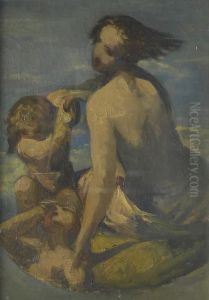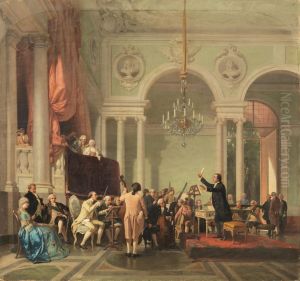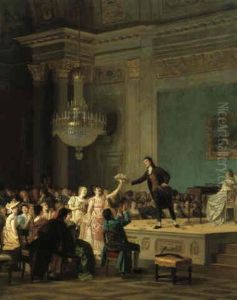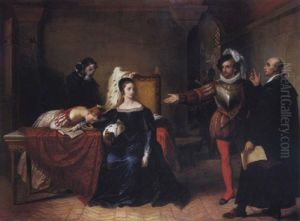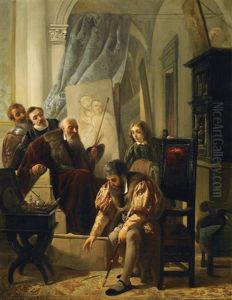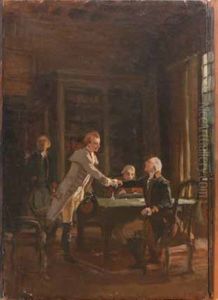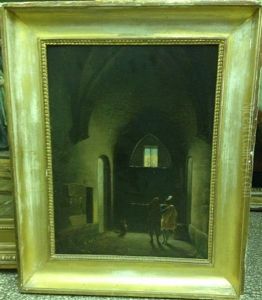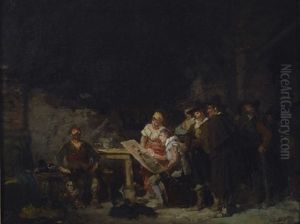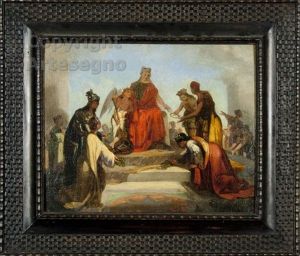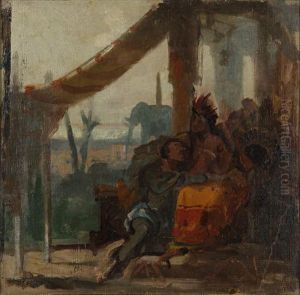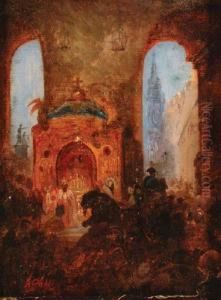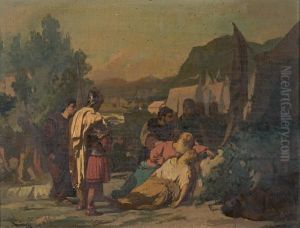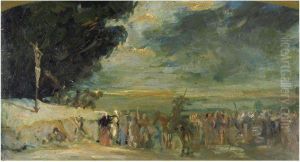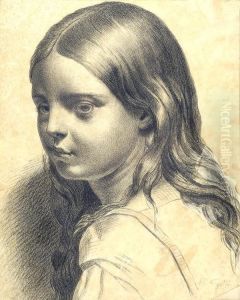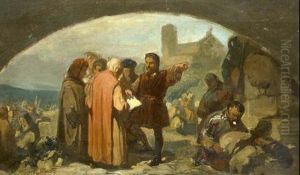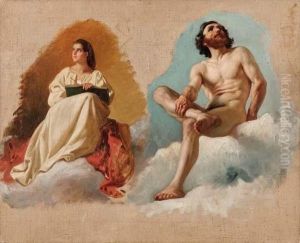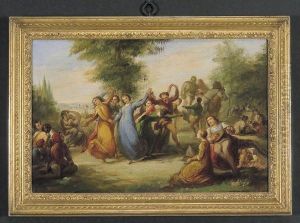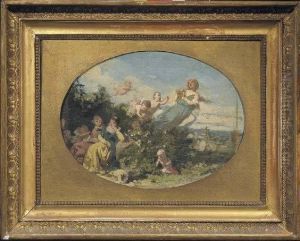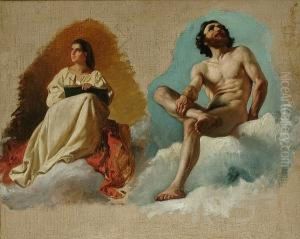Annibale Gatti Paintings
Annibale Gatti was an Italian painter, known for his historic and religious themed works, as well as for his contributions to the decoration of various buildings in Italy. Born on October 18, 1828, in Forlì, Emilia-Romagna, Italy, Gatti showed an affinity for art from a young age and pursued his passion despite the initial reluctance of his family.
Gatti trained at the Academy of Fine Arts in Florence, where he was influenced by the works of the Italian Renaissance and the Neoclassical style. His early career was marked by the production of historical paintings, which were well received by critics and the public alike. He gained recognition for his ability to blend traditional techniques with his own personal style.
Throughout his career, Gatti received various commissions for public and private works. One of his most notable projects was the decoration of the Teatro Comunale of Cesena, for which he created a series of frescoes. His work can also be found in the Palazzo Sanuti-Bevilacqua in Bologna, demonstrating his skill in creating elaborate frescoes that were both grandiose and detailed.
In addition to religious and historic scenes, Gatti also painted portraits and genre scenes, which were popular with the Italian bourgeoisie. His art was characterized by precise draftsmanship, a rich palette, and a focus on the play of light and shadow, which added drama and emotion to his scenes.
Annibale Gatti's work was part of the artistic movement that bridged the gap between the Italian Romantic period and the more modern styles that would follow. He remained an influential figure in the Italian art scene until his death on February 9, 1909, in Florence. His legacy is preserved through his numerous paintings, many of which are housed in museums and galleries across Italy, as well as in the decorative work that remains a testament to his skill in various Italian edifices.
